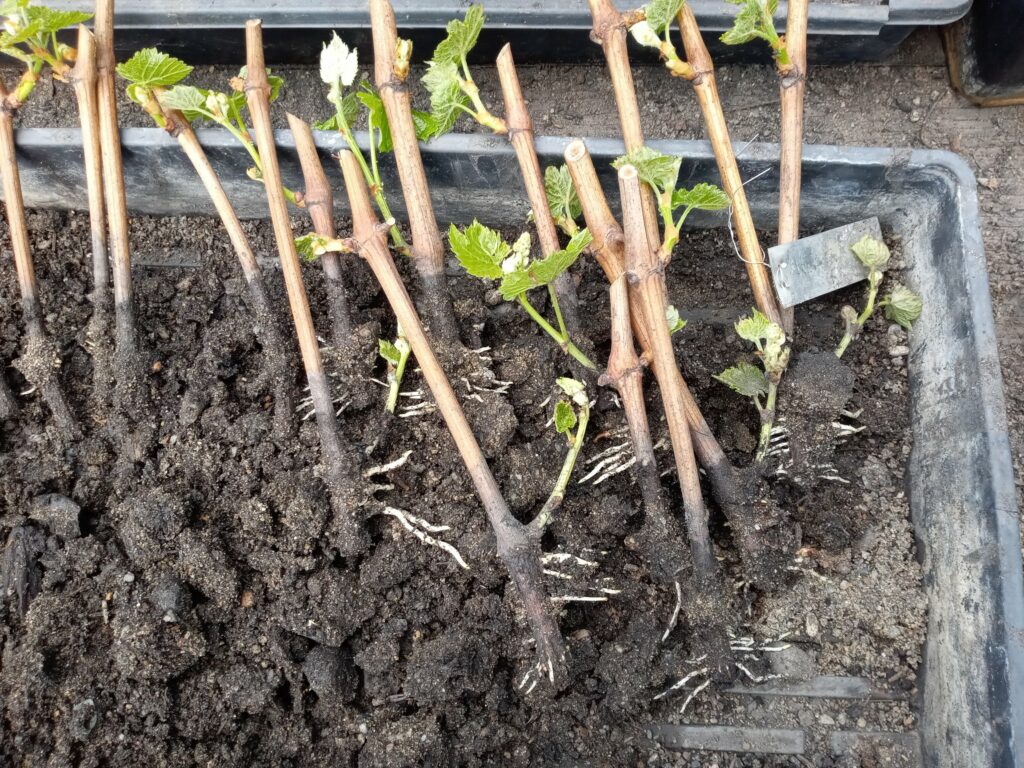When I was a younger and less knowledgeable gardener I tried starting apple trees by planting seeds. Johnny Apple Seed right?! It didn’t go very well and I asked Larry Geno, who owned Bear Creek Nursery at the time about how to do that. He laughed in my face and proceeded to tell me that virtually no fruit trees are planted from seed. Seed allows whatever crazy genetics has come from other trees in the orchard to create trees that would probably vary from seed to seed. Consistent trees are clones, pieces of the original tree that have been rooted, or grafted onto root stock. Actually the root stock has a big influence on the size and resilience of the tree.
The same thing can be said of many other shrubs that you might want around your place. Lilacs are particularly good at sprouting roots and sprouting from roots if you cut them down. It is common knowledge that you can take a cutting from almost anything, stick it in the ground and it will sprout roots and grow sometimes. And therein lays the rub. Not every kind of plant will grow in every type of ground every time but sometimes they do.

With grapes you need to start with cuttings. Since they are pruned every year, there are plenty to choose from. I have noticed that the first few nodes on last year’s canes sprout the best. They are thicker and the buds are usually closer together. Even if you have some canes that are thick all the way along, they tend to have the buds spread further apart and do not sprout roots as well. I put the cuttings in water immediately, even if I can’t process them for a few days. But they don’t do well in water if left too long.
I bundle cuttings of one variety at a time together. As I cut each one down to one or two buds, I dip them in water with mycorrhizal fungi spores in it. Roots have a very beneficial symbiotic relationship with fungi. The fungi get sugars produced by green leaves and in exchange bring water, minerals and other nutrients to the roots. This effectively multiplies the access each root has to food sources by many times. The fungi also seem to promote root growth.
This year I was looking on the Internet for a fancy acid that I had read promotes root growth. Google suggested some related questions, one of which advised that the best stimulant to root growth was a tiny amount of vinegar, about table spoon per gallon. So I used that in the water this year along with the fungi spores.
When gathering grape cuttings, I also gather some willow and soak those cuttings in buckets of water. When first encouraging the grape cuttings to sprout roots, I water them with that willow water because it has natural rooting hormones in it. The willow cuttings never fail to send out lots of roots for themselves in the water. But grapes don’t like to be too saturated with water. So I put the bundles of grape cuttings in a mixture of sand and biochar. The biochar holds moisture and microbes. The sand allows good drainage and some air flow. It also makes it much easier to separate the roots once they have sprouted.
I set the pots with the sand, biochar and bundles of cuttings on nursery heating mats. The mats stay about 80° F and bring the pots up to about 60° F. Warm soil triggers leaf and microbe growth, essentially telling the plants that spring has arrived. That is nice especially when spring seems reluctant to warm up the ground itself.
The cuttings take 3 or 4 weeks to root. They need to have moisture and warmth during that period. Some growers advice keeping the above ground buds in the dark while the below ground parts are rooting. I’m not sure that is helpful. You will certainly get a lot of leaf growth even if there are no roots. The debate is whether the leaves are pulling water that the cuttings can’t supply before they have roots, or if the leaves add sugars and energy to the cutting while it is trying to produce roots.
Not all cuttings behave the same. You might get superb root growth on one variety and poor growth on another. I conclude that I just don’t know everything about rooting cuttings. I have experience, extensive reading and several You Tube videos to go on, still there are wins and fails. Even after 35 years, this is an evolving process. If you have questions to ask or experience to share, I am interested. Like most science, it progresses once you admit that there is more to learn and work with others to share information.
